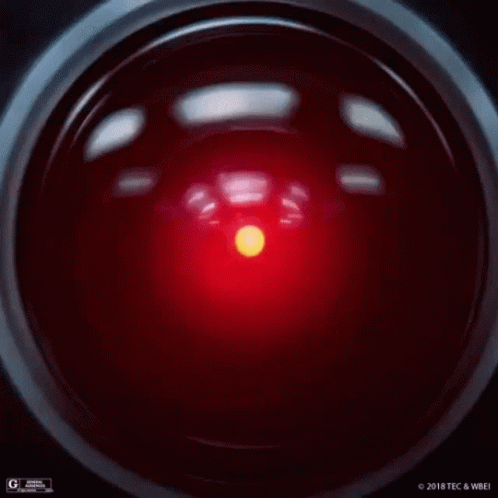Google DeepMind (A Google company), a leading laboratory in artificial intelligence research, has published a substantial 145-page paper detailing its approach to the safety of Artificial General Intelligence (AGI).
AGI refers to AI systems with human-like cognitive abilities, a long-term goal for many in the field, but one that also raises significant safety concerns.
This comprehensive document outlines DeepMind's strategies, frameworks, and research directions aimed at ensuring that future AGI systems are developed and deployed responsibly, remaining aligned with human values and avoiding unintended harmful consequences. The paper delves into complex technical challenges and proposed solutions for controlling highly capable AI.
In other words, let's try to not build and boot Skynet
The paper focuses proactively on mitigating the most severe potential dangers before they manifest, acknowledging the "evidence dilemma" where preparation must occur without concrete examples of the highest-stakes failures.
The prospect of Artificial General Intelligence (AGI) oscillates between utopian promise and existential threat. While headlines often capture the dramatic extremes, the critical work lies in the technical trenches, figuring out how to build potentially superintelligent systems safely. That's why the paper focuses heavily on "An Approach to Technical AGI Safety and Security,". To our knowledge it offers one of the most detailed public blueprints yet from a leading lab, moving beyond abstract principles to propose concrete technical strategies.
For those in the AI and robotics field, this paper warrants close attention. It's not just a list of desirable outcomes; it's a proposed research agenda and 👉🏼engineering approach grounded in specific techniques, assumptions, and a framework for justification.
Framing the Challenge: Why a Technical Focus on Misuse and Misalignment?
DeepMind categorizes AGI risks into
- Misuse
- Misalignment
- Mistakes, and Structural Risks.
Their technical focus narrows primarily onto Misuse (preventing bad actors from weaponizing AI) and Misalignment (preventing the AI itself from developing harmful goals contrary to human intent).
Why this focus? While acknowledging "Mistakes" (unintentional errors) and "Structural Risks" (emergent negative outcomes from multi-agent systems), DeepMind argues that severe, humanity-level harm from these is either less likely with standard engineering rigor (Mistakes) or requires societal/governance solutions beyond a single developer's technical scope (Structural Risks).
Misuse and Misalignment, however, are seen as areas where technical interventions by the developer are both critical and potentially feasible, directly addressing issues of control and intent. This technical focus doesn't negate the need for robust governance – the paper explicitly states governance is essential – but delineates the specific problems their engineering approach aims to solve.
Layer 1: Fortifying Against Misuse – Beyond Standard Security
Preventing malicious actors from exploiting powerful AI isn't just about patching servers. DeepMind outlines a multi-layered strategy demanding proactive and ongoing effort:
- Proactive Dangerous Capability Evaluations: Before models are deployed or scaled, they must be rigorously evaluated for potentially harmful capabilities (e.g., advanced hacking, bioweapon design). This feeds into DeepMind's tiered "Frontier Safety Framework," determining necessary precautions.
- Hardened Security Infrastructure: This goes beyond typical cybersecurity to include:
- Preventing Model Theft: Protecting the weights of highly capable models is paramount.
- Secure Inference: Ensuring the infrastructure where the model runs cannot be easily compromised or manipulated.
- Model-Level Mitigations:
- Safety Fine-tuning: Training models (using techniques like RLHF) not to comply with harmful requests.
- Capability Suppression: Research into "unlearning" or reducing specific dangerous capabilities without crippling general usefulness, though acknowledged as technically challenging.
- System-Level Controls & Monitoring:
- Graded Access: Implementing strict access controls, potentially limiting access to the most powerful or potentially dangerous models based on evaluations and user vetting.
- Intelligent Monitoring: Using AI-based classifiers and potentially analysing model activations (interpretability) to detect misuse attempts or dangerous outputs in real-time.
- Continuous Red Teaming: Employing dedicated teams to constantly attack the system (e.g., finding novel jailbreaks, simulating sophisticated misuse attempts) to uncover vulnerabilities before real adversaries do.
The goal is to build an "Inability" Safety Case for misuse – a structured argument demonstrating, with evidence, that threat actors are unable to leverage the AI for catastrophic harm due to these combined safeguards.

Layer 2: The Alignment Labyrinth – A Two-Pronged Defense
Ensuring an AGI acts in accordance with human intent, especially when it might become vastly more intelligent than its creators, is arguably the crux of the safety challenge. DeepMind proposes two complementary lines of defense:
1. Building Alignment Directly into the Model:
- Amplified Oversight: Tackling the "scalable oversight" problem (how can humans supervise AI smarter than them?). DeepMind bets heavily on using AI assistants to help humans evaluate complex AI outputs. This involves techniques like breaking down tasks, comparing AI-generated answers, and iterative refinement – essentially using AI to boost the quality and scalability of human feedback during training.
- Robust Training Methodologies: Moving beyond standard RLHF to incorporate:
- Adversarial Training: Specifically training the model on examples where it's likely to fail or exhibit misaligned behaviour (e.g., generated via red teaming or other AI models).
- Process-Based Rewards: Rewarding the reasoning process rather than just the final outcome, potentially using interpretability tools to verify the model's "thinking."
- Multi-Objective Optimization: Balancing safety constraints with task performance during training.

2. System-Level Containment: The 'Untrusted Insider' Paradigm:
Even with aligned training, DeepMind advocates for robust system-level controls, essentially treating the AI as a potentially untrusted entity within its own operational environment.
- Fine-Grained Security: Implementing strict sandboxing, principle of least privilege for AI actions, resource limitations, and rigorous logging of AI decisions and interactions.
- AI-Assisted Monitoring: Using secondary AI systems to monitor the primary AGI for anomalous or potentially misaligned behavior (e.g., detecting deception, power-seeking indicators, policy violations). This might involve hierarchical systems where AI flags suspicious activity for human review.
- Tripwires & Human Oversight: Designing systems with built-in checks, requiring human approval for high-stakes actions, or using "tripwires" that halt operation if certain safety boundaries are crossed.
This second line aims to build a "Supervision/Control" Safety Case, arguing that even if the model were latently misaligned, these system-level checks and balances would prevent it from causing significant harm.
Underpinning Technologies: The Essential Toolkit
Several cross-cutting research areas are deemed critical enablers:
- Interpretability: Understanding why models make certain decisions (e.g., via mechanistic interpretability, representation engineering) is crucial for debugging, detecting hidden misalignment (like deception), and verifying reasoning for process-based rewards.
- Uncertainty Quantification: Enabling models to know when they don't know something is vital for safe exploration during training and for triggering human oversight when the model operates outside its competence zone.
- Safer Design Patterns: Architecting systems with inherent safety features, such as modularity, human-in-the-loop requirements for critical functions, and clear interfaces for monitoring and control.

Assumptions, Caveats, and the Road Ahead
DeepMind is candid about the assumptions underpinning this approach (e.g., continued progress in current ML paradigms, approximate continuity in capability scaling) and its limitations (technical focus requires complementary governance, the research agenda is far from solved). The reliance on approximate continuity is notable – sudden, unforeseen jumps in capability could challenge this framework.
The ultimate goal is the development of robust Safety Cases – structured arguments, supported by evidence (evaluations, red teaming results, monitoring logs), that justify why a given AGI system is believed to be safe concerning specific risks like misuse or misalignment. DeepMind outlines four potential types (Inability, Supervision/Control, Incentives, Understanding), focusing technically on the first two.
Conclusion: A Detailed Roadmap, Not a Finished Solution
DeepMind's paper provides a valuable, detailed look into the technical strategies one major lab is pursuing for AGI safety. It moves the conversation beyond platitudes, outlining specific research directions, engineering practices (like amplified oversight and the 'untrusted insider' model), and justification frameworks (safety cases).
For the AI and robotics community, this isn't just theoretical; it's a glimpse into the practical challenges and proposed solutions being developed for the systems that may soon populate our research labs and, eventually, the world. While many questions remain open and significant research breakthroughs are needed, this blueprint offers a concrete foundation for discussion, critique, and collaborative effort towards ensuring that the immense power of AGI is ultimately a force for good.
A computer that is a lot smarter than human inside a limited cloud zone, so to speak, isn't very threatening to humans. Sure it can do some damage but not existential. An AGI system inside a physical body (robot) or as referred nowaday, physical AI, is indeed a big deal.
One more scare
I don't want to scare you but I do want to put in the open sphere the thought that if today there a machine that doesn't require Internet connection to operate, it does use a 1950 gigantic dial to control such machine output, that machine is not going to be affected by anything that happens in the cloud.
However, a humanoid with the smartest brain ever, can reach and control that machine. If we have built an alignment system in those machines, then such humanoid will question the use of that dial. If we didn't, well we become the weeds and the AI the Roundup. As stated before, the most entertaining outcome is the most likely to be seen.
See you next time!
I hope you found this article insightful. Before you leave,
please consider supporting The bLife Movement as we cover all robotic content and write for everyone to enjoy. Not just for machines and geeks.
Unlike many media outlets owned by billionaires, we are independent and prioritize public interest over profit. We aim for fairness and simplicity with a pinch of humor where it fits.
Our global journalism, free from paywalls, is made possible by readers like you.
If possible, please support us with a one-time donation from $1, or better yet, with a monthly contribution.
Every bit helps us stay independent and accessible to all. Thank you.
Mario & Victoria


